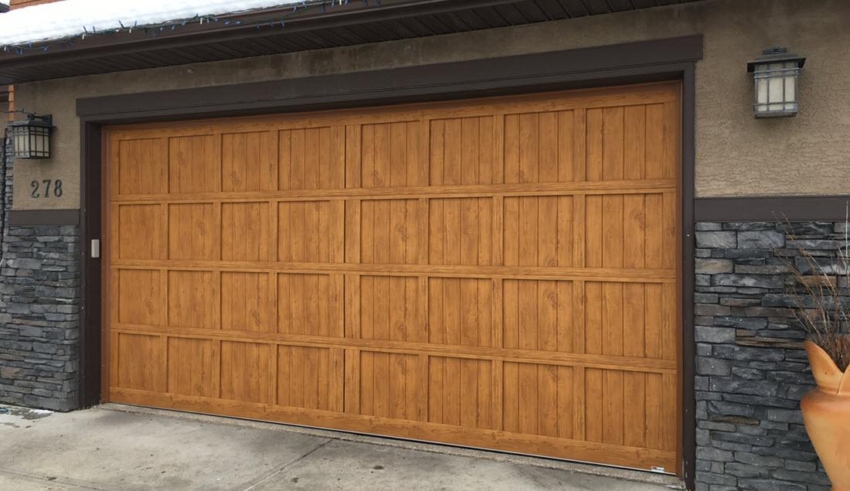
Many homeowners don’t think much about the insulation of their garage doors. But it’s worth considering if you want to improve your home’s energy efficiency. There are different types of insulation, each with its benefits and drawbacks. This blog post has broken down the facts you must know about garage door insulation so you can choose the best for your home.
Table of Contents
How can a Garage Door Impact Insulation?
Garage door insulation serves the primary function of sealing your garage and creating a shaded, sheltered space to store your vehicles and belongings. Now, you might be thinking, if garage doors keep the elements out, how do insulated garage doors differ?
You may believe that most garage doors have the same ability to block out extreme heat or cold. Still, two significant garage door characteristics can change the insulating effect your garage door can have.
1. Construction Layers
The number of layers in your garage door influences how well it insulates your garage. Garage door construction is classified into three types:
- Single Layer: Also known as non-insulated garage doors, these doors have only one layer of panel material and no additional insulation.
- Double Layer: Besides the layer that makes up the exterior door, there is a sheet of insulation on the inside, usually made of polystyrene.
- Triple Layer: The most insulating, these doors have a much thicker layer of polyurethane or polystyrene insulation packed between two sheets of garage door material.
2. Garage Door Material
Professionals make garage doors one of the four materials listed below. While you can improve any of them by adding layers of insulation, each has unique properties that determine its durability and insulating power. These materials are as follows:
- Steel – Steel is the most commonly used material for modern garage doors because it is durable and low maintenance. It is much less likely to be damaged by anything scraping or bumping against it, and it comes in a wide range of design options. Steel is an excellent option for wrapping around vinyl or foam insulation layers in double and triple-layer garage doors. A single steel layer can provide reasonable insulation on its own.
- Aluminium – Aluminium garage doors are lightweight and sleek, giving your home an updated appearance. It is much lighter than steel, making it a poor insulator due to its thinness.
- Glass – No garage door is made of glass, but glass can be the main component of a garage door if it’s made of giant windows within a metal frame, as seen in fire truck garages. Because glass, like aluminium, is thin, it insulates poorly. Acrylic is a less expensive alternative to glass windows, but it lets a lot of heat or cold in.
- Wood – A wood garage door gives homeowners a classic, high-end visual appeal.
How Insulating a Garage Door Works
There are several methods for improving the insulation in your garage. Caulking leaks between the frame and foundation around your garage door and windows can help, but doubling up on garage door layers is the best way to improve insulation. There are two primary methods for adding insulation to double or triple-layer garage doors, which get determined by the material used:
1. Polystyrene Insulation
A stiff padding board is placed along the inside of the garage door to add a layer of insulation. The polystyrene is flush with the outer garage door layer and is not typically sealed in the same way injected polyurethane insulation is. As a result, it is the less expensive of the two options.
2. Polyurethane Insulation
It is known as a sandwich door because a layer of insulation foam gets injected between two layers of the garage door. This foam adheres to the door’s wood or steel like thick glue, forming a strong and rigid structure. Compared to polystyrene, it provides roughly twice the value — a measurement professionals use to determine insulating power.
How are Insulated Garage Doors Different from Non-Insulated Doors?
From the outside, non-insulated and insulated garage doors in Melbourne are difficult to distinguish, leading you to believe that the only difference between the two is thickness. When we discuss some drawbacks of having only a thin layer between your garage and the outside world, the distinctions become much clearer.
1. Garage Temperature
Depending on the insulation of your garage door, heat during hot summer or cold weather can seep through the gaps and into your garage. It not only affects whether you want to store specific items in your garage, but it can also cause temperature instability in your home because the air from your garage leaks into the house.
2. Noise Effects
The single-layer panels often rattle and quake when you open or close a non-insulated garage door. They can also cause loud reverberations if someone or something bumps into them during their daily activities. Furthermore, if your garage is not well-insulated, the thinness of a single-layer garage door can mean that any actions you do in the garage get heard outside, and vice versa, which can cause you disturbance.
3. Sturdiness
Thin, uninsulated garage doors are much more likely to sustain permanent dents and damages if they get hit by basketballs, bikes, or even hail. If you live in an area that experienced severe storms, such as hurricanes or hail storms, a non-insulated garage door may do more harm than good because it will be less capable of standing firm in high winds to protect your belongings.
Is an Insulated Garage Door Worth It?
A series of questions will help you determine whether an insulated garage door is right for you.
- Is your garage connected to your house?
- Do you park your car inside when the weather is extremely hot or cold?
- Do you keep anything else in your garage that could deteriorate in these temperatures?
- Do you have any rooms above your garage that could be affected by extreme temperatures in the garage?
If your answer to these questions is a yes, you should consider making the switch.
If you already like the exterior of your single-layer garage door, adding insulation to the interior will not affect the outside appearance, so you can enjoy the benefits of an insulated garage door without having to adjust for a new style or material for your garage door.
Opt for an Insulated Garage Door
Insulating your garage door is the perfect solution to improve your home’s energy efficiency. As you read initially, garage insulation doors have many material options; make sure to choose the proper insulation to enjoy the maximum benefit. Contact our experts from Insulation Garage Door for the best choice for cheap garage door insulation. Get in touch with us, and let us help you the right way!














